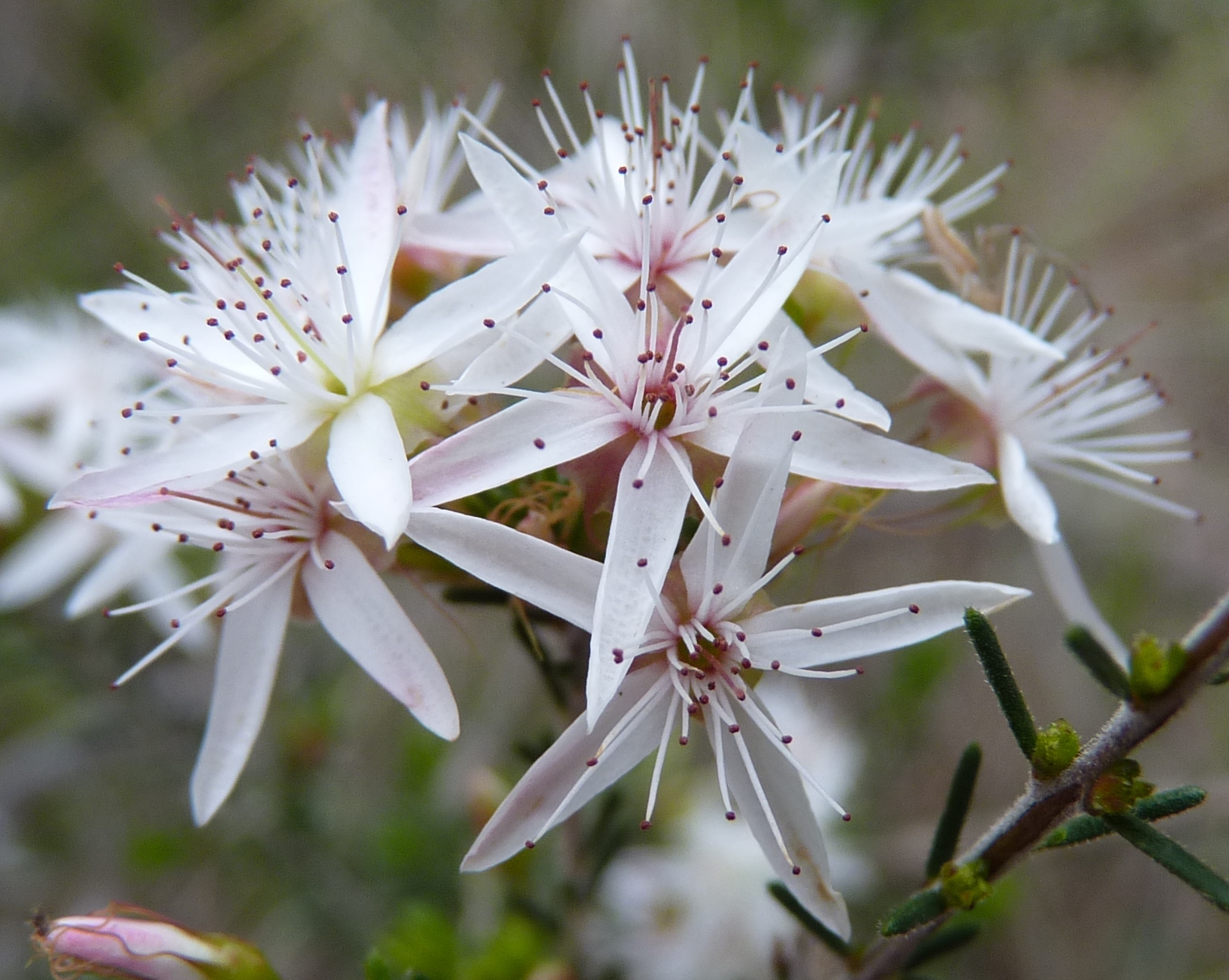
Greek calyx — calyx, thrix — hair, referring to the bristle-like hairs at the tips of the calyx lobes.
Shrubs. Leaves mostly alternate. Flowers solitary, stalked, 5-parted, white, pink, yellow or purple. Sepals spreading and usually with the tip long-pointed or hair-like and persistent in fruit when they turn dark purple. Petals free. Stamens numerous. Ovary inferior, with 1 chamber and mostly 2 ovules. Fruit a dry, indehiscent nut containing 1 seed.
Grown for the profuse and unusual flowers with calyces that persist after flowering. Some species have fragrant flowers.
76 species Australia-wide but with centres of distribution in SW WA and NW Australia.
Cuttings, occasionally by seed but this is difficult.
Ovary 1-chambered; fruit indehiscent; sepals and petals 5, the sepals pointed or with a long hair- or bristle-like awn, often persistent and turning deep red to purple in fruit; stamens numerous.
Craven (1987).
Source: (2002). Myrtaceae. In: . Horticultural Flora of South-eastern Australia. Volume 3. Flowering plants. Dicotyledons. Part 2. The identification of garden and cultivated plants. University of New South Wales Press.
